MUC1-C dependence in treatment-resistant prostate cancer uncovers a target for antibody-drug conjugate therapy
- PMID: 40553569
- PMCID: PMC12288968
- DOI: 10.1172/jci.insight.190924
MUC1-C dependence in treatment-resistant prostate cancer uncovers a target for antibody-drug conjugate therapy
Abstract
Androgen receptor-positive prostate cancer (PC), castration-resistant prostate cancer (CRPC), and neuroendocrine prostate cancer (NEPC) invariably become resistant to treatment with targeted and cytotoxic agents. Multiple pathways have been identified as being responsible for these pleiotropic mechanisms of resistance. The mucin 1 (MUC1) gene is aberrantly expressed in CRPC/NEPC in association with poor clinical outcomes; however, it is not known if the oncogenic MUC1-C/M1C protein drives treatment resistance. We demonstrated that MUC1-C is necessary for resistance of (i) PC cells to enzalutamide (ENZ) and (ii) CRPC and NEPC cells to docetaxel (DTX). Our results showed that MUC1-C-mediated resistance is conferred by upregulation of aerobic glycolysis and suppression of reactive oxygen species necessary for self-renewal. Dependence of these resistant phenotypes on MUC1-C for the cancer stem cell (CSC) state identified a potential target for treatment. In this regard, we further demonstrated that targeting MUC1-C with an M1C antibody-drug conjugate (ADC) is highly effective in suppressing (i) self-renewal of drug-resistant CRPC/NEPC CSCs and (ii) growth of treatment-emergent NEPC tumor xenografts derived from drug-resistant cells and a patient with refractory disease. These findings uncovered a common MUC1-C-dependent pathway in treatment-resistant CRPC/NEPC progression and identified MUC1-C as a target for their therapy with an M1C ADC.
Keywords: Cancer; Drug therapy; Oncology; Therapeutics; Urology.
Conflict of interest statement
Figures
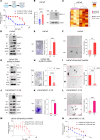
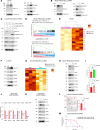
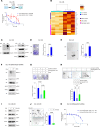
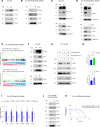

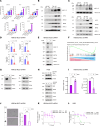
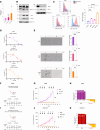
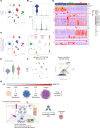
Similar articles
-
Metformin in overcoming enzalutamide resistance in castration-resistant prostate cancer.J Pharmacol Exp Ther. 2025 Jan;392(1):100034. doi: 10.1124/jpet.124.002424. Epub 2024 Nov 22. J Pharmacol Exp Ther. 2025. PMID: 39893002 Free PMC article.
-
Phenotypic Plasticity and Androgen Receptor Bypass Drive Cross-Resistance to Apalutamide in Castration-Resistant Prostate Cancer Cell Models.Int J Mol Sci. 2025 Jun 20;26(13):5939. doi: 10.3390/ijms26135939. Int J Mol Sci. 2025. PMID: 40649715 Free PMC article.
-
SLC7A11 upregulation via AR and NEDD4L ubiquitination contributes to ferroptosis inhibition and enzalutamide resistance in castration-resistant prostate cancer.Cell Death Dis. 2025 Aug 5;16(1):591. doi: 10.1038/s41419-025-07809-4. Cell Death Dis. 2025. PMID: 40764425 Free PMC article.
-
EAU guidelines on prostate cancer. Part II: Treatment of advanced, relapsing, and castration-resistant prostate cancer.Eur Urol. 2014 Feb;65(2):467-79. doi: 10.1016/j.eururo.2013.11.002. Epub 2013 Nov 12. Eur Urol. 2014. PMID: 24321502
-
Enzalutamide after docetaxel and abiraterone acetate treatment in prostate cancer: a pooled analysis of 10 case series.Clin Genitourin Cancer. 2015 Jun;13(3):193-8. doi: 10.1016/j.clgc.2014.10.006. Epub 2014 Nov 7. Clin Genitourin Cancer. 2015. PMID: 25466676
References
-
- Seton-Rogers S. Prostate cancer: connecting androgen receptor and immunity. Nat Rev Cancer. 2016;16(5):273. - PubMed
MeSH terms
Substances
Grants and funding
LinkOut - more resources
Full Text Sources
Research Materials
Miscellaneous

